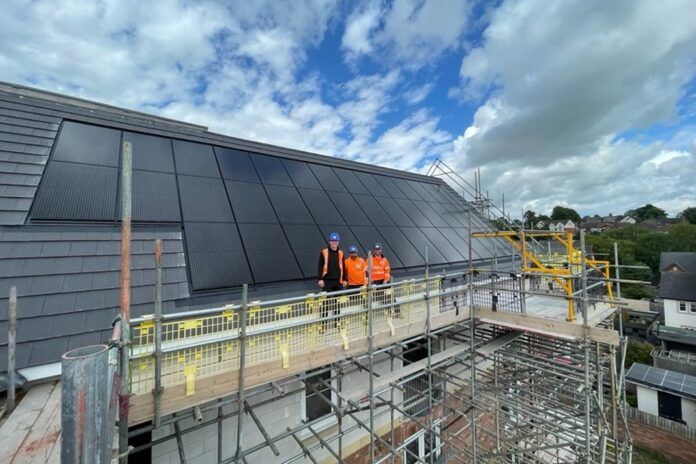
A consumer survey by Marley found an increase in solar PV installations.
Government statistics from 2023 show that solar installations stand at over 1.35m, with the period between 2022 and 2023 witnessing the largest annual panel installation increase for seven years.
According to a statement, local authorities, housebuilders and homeowners are recognising the many benefits solar PV as a renewable technology on roofscapes is delivering. Solar is helping the construction sector meet legislative demands for low carbon emission new homes, it noted, and it is also supporting local authorities as they use government funding to improve the energy efficiency of legacy housing stock.
And homeowners are also increasingly looking to solar as an accessible solution to help them tackle the cost-of-living crisis, lower their energy bills and create a sustainable future for their properties.
Marley recently undertook a survey of 2,000 homeowners to ask them about solar as part of a wider energy efficiency debate. The company said that the results offer “excellent news” for roofing contractors who may be considering adding solar installation to their service offering.
The survey shows that 49% of homeowners are considering investing in solar panels on their roof, with the primary motivation for 90% cited as a desire to reduce the cost of their energy bills. Other reasons were a wish to generate their own power, 63%, and to reduce their carbon emissions, 46%.
The statement said that with clear demand in the marketplace, it is vital that installation requirements can be satisfied – particularly with some respondents in the survey pointing out that, while they want to install solar on their roof, they cannot find a qualified contractor to carry out the work.
Consumers also pointed out some of the barriers that are causing reservations to invest. A total of 61% said the number one obstacle is the perceived cost of solar panels in the mind of the consumer. Additionally, 28% of people pointed to their ‘lack of knowledge’ around solar panels, 27% cited the appearance of the panels as a barrier, and a quarter believed that their property was ‘unsuitable’ for solar installation.
